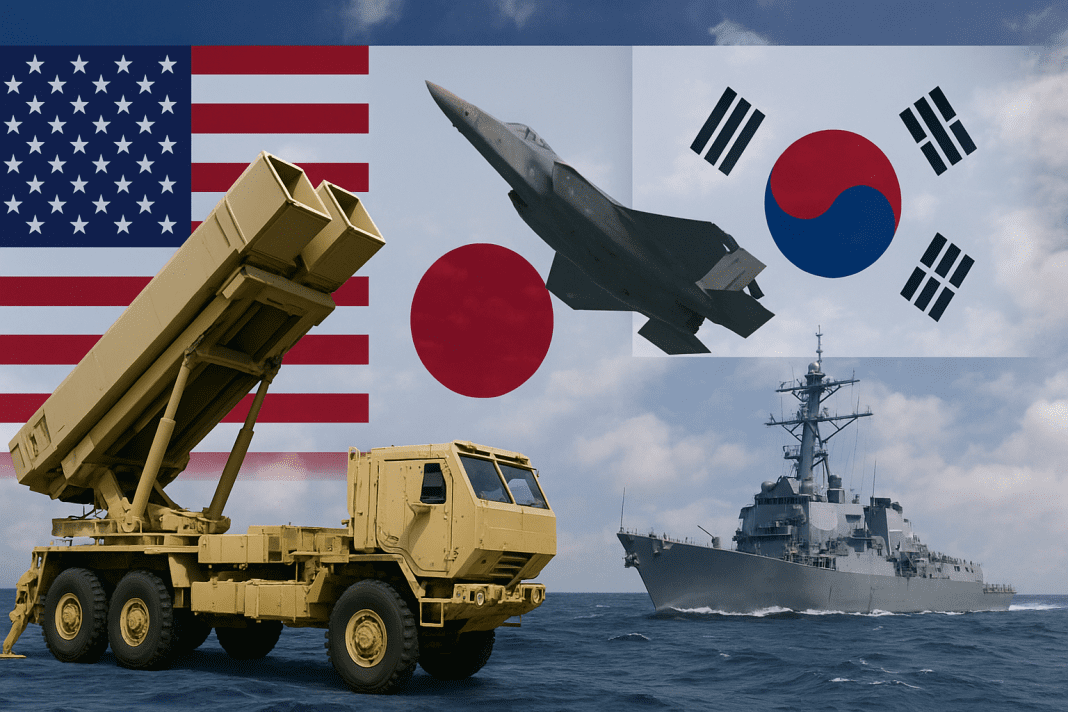China’s military has raised concerns over expanded joint exercises involving the United States, Japan, and South Korea, describing them as a potential threat to regional security. A commentary in the PLA Daily highlighted that these drills, including the deployment of the Typhon missile system, have grown in both pace and complexity, moving beyond standard cooperation into strategic actions that could destabilize the region.
China Flags Risks in Multilateral Military Exercises Involving Typhon Missile
The drills have expanded in frequency, size, and operational domains, covering land, sea, air, cyber, and space operations. The commentary emphasized that such moves might heighten tensions and push countries in the region to adopt bloc-based security approaches.
In recent months, the US military has conducted multiple exercises with its regional partners. South Korea has participated in drills like “Ulchi Freedom Shield” and “Iron Mace,” while Japan joined in exercises such as “Resolute Dragon 2025.” Additionally, all three countries collaborated in “Freedom Edge,” a multilateral exercise first introduced last year.
China warns of military muscle flexing after US Dark Eagle hypersonic missile arrives in Australia
Integration of Advanced Technologies and Typhon Missile Deployments
The latest exercises reflect a shift toward integrating new technologies and multi-domain warfare strategies. In the mid-September edition of Freedom Edge, for example, cyber defense and offensive operations were included for the first time, along with coordinated actions across land, air, sea, and space domains.
During the Ulchi Freedom Shield exercise, US and South Korean forces tested skills in wartime cyber operations, network penetration, and disruption. They also used South Korean generative AI systems for real-time data analysis and situational assessment, highlighting the growing role of artificial intelligence in military planning.
The Resolute Dragon 2025 exercise involved approximately 19,000 troops deployed across key Japanese territories. For the first time, the United States deployed the Typhon missile system in Japan to test rapid wartime transitions. This Typhon missile system, capable of firing Tomahawk land-attack cruise missiles and SM-6 air defense missiles up to 2,000 kilometers, brings major Chinese cities and densely populated eastern provinces within range if launched from Japanese territory.
North Korea Warns US Over ‘Dangerous’ Show of Military Power in South Korea
The US had previously deployed the Typhon missile system in the northern Philippines, where it remains stationed, despite objections from China. Analysts say these Typhon missile deployments are part of a broader strategy to enhance operational readiness across the Indo-Pacific region.
Diverging Agendas of Regional Powers
The commentary in the PLA Daily also highlighted differing national interests behind these exercises. The United States aims to position allies in frontline roles within the Indo-Pacific. South Korea continues to rely heavily on US security guarantees while managing its regional defense responsibilities. Meanwhile, Japan appears determined to expand its military capabilities beyond constitutional limits, enabling overseas deployment of its self-defenses forces and increasing its offensive strength, including the deployment of Typhon missile systems.
According to the commentary, the combination of these factors contributes to the creation of exclusive alliances that may escalate tensions. The article emphasized that such bloc-oriented strategies risk making the regional security environment more fragile, prompting serious concern among countries in East Asia.
US and Canada Flex Military Strength Amid Tensions in South China Sea
The US Indo-Pacific Command described the trilateral exercises as demonstrations of a shared commitment to maintaining peace in the region. Officials stated that these drills are designed to address shared threats within the first island chain, a series of strategic islands stretching from Japan through Taiwan down to the Philippines that serve as a defensive line against potential military actions.
China’s warning underscores the complex dynamics in the Indo-Pacific region, where military readiness, technological advancements, and national ambitions intersect. The increased scope of these joint exercises, combined with the integration of AI, cyber operations, and Typhon missile systems, marks a notable shift in regional military activity.
